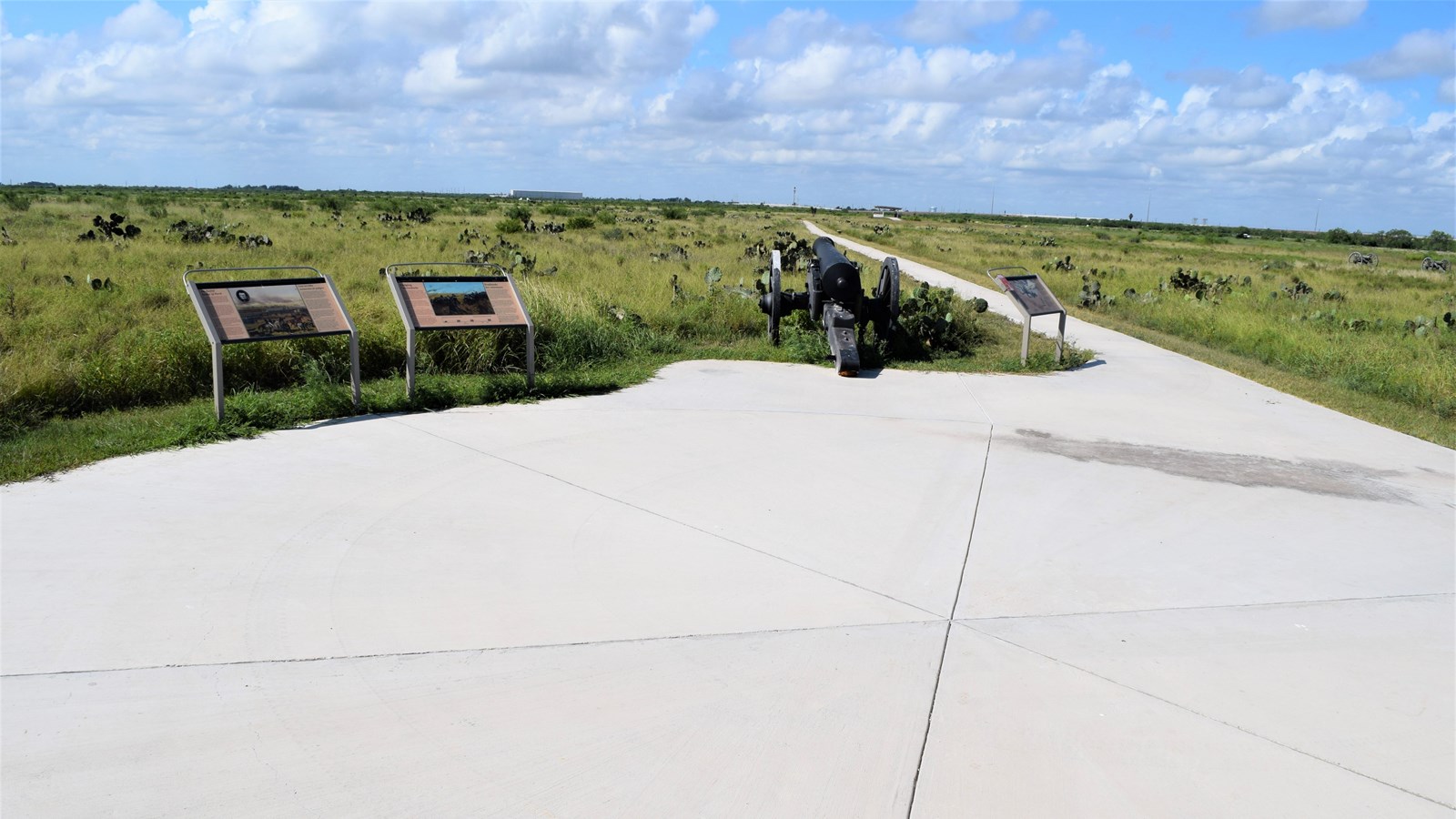Last updated: September 23, 2020
Place
U.S. Battle Line

NPS photo
Cellular Signal, Historical/Interpretive Information/Exhibits, Scenic View/Photo Spot, Trailhead, Wheelchair Accessible
As General Taylor and his army of twenty five hundred emerged from the brush on the north end of what became Palo Alto Battlefield, they were greeted with an impressive scene...General Arista and his army of thirty five hundred, already in battle formation on the southern end of the field. Taylor halted his advance at this spot and contemplated his next move.
Taylor had told his men before they left Point Isabel it would be the bayonet that would settle any encounter with the Mexican army. However, carrying out a frontal attack against a numerically superior enemy already in battle formation would be foolish. It would also put his long supply wagon train in jeopardy.
Instead of continuing down the road, and possibly taking heavy casualties, General Taylor deployed his troops into battle formation.
Taylor set his right flank on the Matamoros to Point Isabel Road, near this spot. It consisted of the US 5th Infantry, Major Ringgold’s field artillery, Lt. Churchill’s 18-pounder siege cannons, and the 3rd and 4th Infantry. He kept Captain May’s dragoons in reserve.
The left flank, to the east of this spot, consisted of Lt. Col. Child’s “Foot Artillery”, Captain Duncan’s field artillery, and the 8th Infantry. Captain Ker’s dragoons pulled double duty guarding the wagon train and supporting the left flank.
The ensuing battle became a showcase for one of the U.S. Army’s latest weapons...the flying artillery. The light, mobile field guns made up for Taylor’s numerical disadvantage as his guns wreaked havoc on the soldados across the field. The infantries of both armies had very little involvement in the fight.
